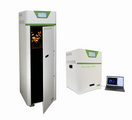1. Manaa A, et al. 2019. Salinity tolerance of quinoa (Chenopodium quinoaWilld) as assessed by chloroplast ultrastructure and photosynthetic performance. Environmental and Experimental Botany162: 103-114
2. Yu Z, et al. 2019.Sensitivity of Chlamydomonasreinhardtii to cadmium stress is associated with phototaxis. Environmental Science: Processes & Impacts21: 1011-1020
3. Liang Y, et al. 2019.Molecular mechanisms of temperature acclimation and adaptation in marine diatoms. The ISME journal, DOI: 10.1038/s41396-019-0441-9
4. Orfanidis S, et al. 2019.Solving Nuisance Cyanobacteria Eutrophication Through Biotechnology. Applied Sciences9(12): 2566
5. Sicora C I, et al. 2019.Regulation of PSII function in Cyanothece sp. ATCC 51142 during a light–dark cycle. Photosynthesis Research139(1–3): 461–473
6. Smythers A L, et al. 2019.Characterizing the effect of Poast on Chlorella vulgaris, a non-target organism. Chemosphere219: 704-712
7. Albanese P, et al. 2018.Thylakoid proteome modulation in pea plants grown at different irradiances: quantitative proteomic profiling in a non‐model organism aided by transcriptomic data integration. The Plant Journal96(4): 786-800
8. Antal T, Konyukhov I, Volgusheva A, et al. 2018.Chlorophyll fluorescence induction and relaxation system for the continuous monitoring of photosynthetic capacity in photobioreactors. PhysiolPlantarum. DOI: 10.1111/ppl.12693
9. Antal TK, Maslakov A, Yakovleva O V, et al. 2018.Simulation of chlorophyll fluorescence rise and decay kinetics, and P700-related absorbance changes by using a rule-based kinetic Monte-Carlo method. Photosynthesis Research. DOI:10.1007/s11120-018-0564-2
10. Biswas S, Eaton-Rye JJ, et al. 2018.PsbY is required for prevention of photodamage to photosystem II in a PsbM-lacking mutant of Synechocystis sp. PCC 6803. Photosynthetica, 56(1), 200–209.
11. Bonisteel E M, et al. 2018.Strain specific differences in rates of Photosystem II repair in picocyanobacteria correlate to differences in FtsH protein levels and isoform expression patterns. PLoS ONE 13(12): e0209115.
12. Fang X, et al. 2018.Transcriptomic responses of the marine cyanobacteriumProchlorococcus to viral lysis products. Environmental Microbiology, doi: 10.1101/394122.
13. KuthanováTrsková E, Belgio E, Yeates A M, et al. 2018. Antenna proton sensitivity determines photosynthetic light harvesting strategy, Journal of Experimental Botany69(18): 4483-4493
14. Hanelt D.2018. Photosynthesis assessed by chlorophyll fluorescence. Bioassays, 169-198.
15. Liefer J. D.,Garg A. Campbell D. A., et al. 2018Nitrogen starvation induces distinct photosynthetic responses and recovery dynamics in diatoms and prasinophytes. PLoS ONE. DOI: 10.1371/journal.pone.0195705
16. Malerba M. E., Palacios M. M., Palacios Delgado Y. M.,et al.2018 Cell size, photosynthesis and the package effect: an artificial selection approach. New Phytologist. DOI: 10.1111/nph.15163
17. Patel V. K.,et al.2018Characterization of Seven Species of Cyanobacteria for High-Quality Biomass Production. Arabian Journal for Science and Engineering43(1): 109–121
18. Pavlou A., Jacques J., Ahmadova N., Mamedov F., &Styring S.2018. The wavelength of the incident light determines the primary charge separation pathway in Photosystem II. Scientific Reports, 8(1). DOI:10.1038/s41598-018-21101-w
19. Perkins R., Williamson C., Lavaud J.,et al. 2018 Time-dependent upregulation of electron transport with concomitant induction of regulated excitation dissipation in Hasleadiatoms. Photosynth Res. DOI: 10.1007/s11120-018-0508-x
20. Poulin C., D. Antoine, and Y. Huot. 2018. Diurnal variations of the optical properties of phytoplankton in a laboratory experiment and their implication for using inherent optical properties to measure biomass," Opt. Express 26, 711-729.
21. Semin B. K., Davletshina L. N., &Mamedov M. D.2017. Effect of different methods of Ca2 extraction from PSII oxygen-evolving complex on the QA− oxidation kinetics. Photosynthesis Research 136(1), 83–91.
22. Spijkerman E., Behrend H., Fach B., &Gaedke U.2018. Decreased phosphorus incorporation explains the negative effect of high iron concentrations in the green microalga Chlamydomonasacidophila. Science of The Total Environment 626, 1342–1349.
23. Solhaug K. A., Chowdhury D. P., &Gauslaa Y.2018. Short- and long-term freezing effects in a coastal (Lobariavirens) versus a widespread lichen (L. pulmonaria). Cryobiology 82, 124–129.
24. Takagi D., Ifuku K., Nishimura T. and Miyake C. 2018Antimycin A inhibits cytohrome b559-mediated cyclic electron flow within photosystem II. Photosynth Res. DOI: 10.1007/s11120-018-0519-7
25. Ungerer J., Lin P-C., Chen H-Y., Pakrasi H. B.2018 Adjustments to photosystem stoichiometry and electron transfer proteins are key to the remarkably fast growth of the cyanobacteriumSynechococcuselongatusUTEX 2973. mBio 9:e02327-17.
26. Xu K., Lavaud J., Perkins R., Austen E., Bonnanfant M., & Campbell D. A. 2018. Phytoplankton σPSII and Excitation Dissipation; Implications for Estimates of Primary Productivity. Frontiers in Marine Science, 5. DOI:10.3389/fmars.2018.00281
27. Yu Z., et al. 2018Physiological changes in Chlamydomonasreinhardtii after 1000 generations of selection of cadmium exposure at environmentally relevant concentrations. Environmental Science: Processes & Impacts, DOI:10.1039/C8EM00106E
28. Yu Z., et al. 2018Effects of TiO2, SiO2, Ag and CdTe/CdS quantum dots nanoparticles on toxicity of cadmium towards Chlamydomonasreinhardtii. Ecotoxicology and Environmental Safety156, 75-86
29. Yussi M. Palacios, AvigadVonshak, and John Beardall2018 Photosynthetic and growth responses of Nannochloropsisoculata(Eustigmatophyceae) during batch cultures in relation to light intensity. Phycologia57(5), 492-502.
30. Ahmadova N., Ho F., Styring S. and Mamedov F. 2017Tyrozine D oxidation and redox equilibrium in Photosystem II. BBA – Bioenergetics. DOI:10.1016/j.bbabio.2017.02.011
31. Albanese P.,et al. 2017Pea PSII-LHCII supercomplexes form pairs by making connections across the stromal gap. Scientific Reports, 7: 10067, DOI:10.1038/s41598-017-10700-8
32. Belgio E., Trsková E., Kotabová E., et al. 2017 High light acclimation of Chromeraveliapoints to photoprotective NPQ. Photosynth Res. DOI: 10.1007/s11120-017-0385-8
33. Bernát G., Steinbach G., Kaňa R. et al. 2017. On the origin of the slow M–T chlorophyll A fluorescence decline in cyanobacteria: interplay of short-term light-responses. Photosynth Res. DOI: 10.1007/s11120-017-0458-8
34. Chiş C., Carmel D., Chiş I.et al. 2017 Expression of psbA1 gene in Synechocystis sp. PCC 6803 is influenced by CO2. Open Life Sci. DOI: 10.1515/biol-2017-0018
35. Felcmanová K., Lukeš M., Kotabová E., et al. 2017 Carbon use efficiencies and allocation strategies in Prochlorococcusmarinus strain PCC 9511 during nitrogenlimited growth. Photosynth Res. Volume 134. DOI: 10.1007/s11120-017-0418-3
36. Huokko T., et al. 2017Role of type 2 NAD (P) H dehydrogenase NdbC in redox regulation of carbon allocation in Synechocystis. Plant Physiology 174. 1863–1880
37. Kamalanathan M, Thi Dao L. H., Chaisutyakorna P., et al. 2017 Photosynthetic physiology of Scenedesmus sp. (Chlorophyceae) under photoautotrophic and molasses-based heterotrophic and mixotrophic conditions. Phycologia. 56(6), DOI: 10.2216/17-45.1
38. Li G. and Campbell D. A.2017 Interactive effects of nitrogen and light on growth rates and RUBISCO content of small and large centric diatoms. Photosynth Res. 131, DOI:10.1007/s11120-016-0301-7
39. Li G., Talmy D. and Campbell D. A. 2017 Diatom growth responses to photoperiod and light are predictable from dielreductant generation. J. Phycol.53. DOI: 10.1111/jpy.12483
40. Markou G., Dao L. H. T., Muylaert K. and Beardall J.2017 Influence of different degrees of N limitation on photosystem II performance and heterogeneity of Chlorella vulgaris.Algal Research. 84 – 92. DOI: 10.1016/j.algal.2017.07.005
41. Miyachi M., Ikehira S., Nishior D.,et al. 2017 Photocurrent generation of reconstituted photosystem II on self-assembled gold film. Langmuir.,33 (6). DOI: 10.1021/acs.langmuir.6b03499
42. Murphy C. D.,et al. 2017Photoinactivation of Photosystem II in Prochlorococcus and Synechococcus. PLoS ONE, 12(1): e0168991
43. Nath A., et al.2017Microalgal consortia differentially modulate progressive adsorption of hexavalent chromium. Physiology and Molecular Biology of Plants, 23(2), 269–280
44. Ni G., et al.2017Arctic Micromonas uses protein pools and non-photochemical quenching to cope with temperature restrictions on Photosystem II protein turnover. Photosynthesis Research131(2): 203–220
45. Piwosz K., Kaftan D., Dean J., et al. 2017 Nonlinear effect of irradiance on photoheterotrophic activity and growth of the aerobic anoxygenic phototrophic bacterium Dinoroseobactershibae. Environmental microbiology. DOI: 10.1111/1462-2920.14003
46. Xu K., Grant-Burt J. L., Donaher N. and Campbell D. A.2017 Connectivity among Photosystem II centers in Phytoplankters: Patterns and Responses. BBA – Bioenergetics. DOI:10.1016/j.bbabio.2017.03.003
47. Zhang X., Ma F., Zhu X.,et al. 2017The acceptor side of photosystem II is the initial target of nitrite stress in Synechocystis sp. strain PCC 6803. Appl Environ Microbiol
48. Dao L. H. T. and Beardall J.2016 Effects of lead on two green microalgae Chlorella and Scenedesmus: photosystem II activity andheterogenity. Algal Research16. DOI: 10.1016/j.algal.2016.03.006.
49. Ferroni L., Suorsa M., Aro, E. M., et al. 2016 Light acclimation in the lycophyteSelaginellamartensii depends on changes in the amount of photosystems and on the flexibility of the light-harvesting complex II antenna association with both photosystems. New Phytol. 211. DOI: 10.1111/nph.13939
50. Garcia-Chaves M. C., Cottrell M. T., Kirchman D. L. et al. 2016 Single-cell activity of freshwater aerobic anoxygenic phototrophic bacteria and their contribution to biomass production. The ISME Journal. 10. DOI:10.1038/ismej.2015.242
51. Grama B. S., Agathos S. N. and Jeffryes C. S.2016 Balancing Photosynthesis and Respiration Increases Microalgal Biomass Productivity during Photoheterotrophy on Glycerol. ACSSustainable Chem. Eng. 4, 1611–1618.
52. Kobayashi K., Endo K. and Wada H.2016 Multiple Impacts of Loss of PlastidicPhosphatidylglycerol Biosynthesis on Photosynthesisduring Seedling Growth of Arabidopsis. Frontiers of Plant Sciences. 7. DOI: 10.3389/fpls.2016.00336
53. Li G., Woroch A. D., Donaher N. A., Cockshutt A. M.,et al. 2016 A Hard Day's Night: Diatoms Continue Recycling Photosystem II in the Dark . Frontiers in Marine Science. 3. DOI: 10.3389/fmars.2016.00218
54. Murphy C. D., Ni G., Li G., et al. 2016 Quantitating active photosystem II reaction center content from fluorescence induction transients. Limnol. Oceanogr. Methods. DOI:10.1002/lom3.10142
55. Patel V. K., Mají D., Pandey S. S., et al. 2016) Rapid budding EMS mutants of Synechocystis PCC 6803 producing carbohydrate or lipid enriched biomass, Algal Research. Volume 16. DOI: 10.1016/j.algal.2016.02.029.
56. Rehman A. U., Szabó M., Deák Z., et al. 2016Symbiodinium sp. cells produce light-induced intra- and extracellular singlet oxygen, which mediates photodamage of the photosynthetic apparatus and has the potential to interact with the animal host in coral symbiosis. New Phytol. 212. DOI:10.1111/nph.14056
57. Treves H., Raanan H., Kedem I., et al. 2016The mechanisms whereby the green alga Chlorella ohadii isolated from desert soil crust, exhibits unparalleled photodamageresistence. New Phytologist. 210.DOI : 10.1111/nph.13870
58. Volgusheva A., Kruse O., Styring S., et al. 2016 Changes in the Photosystem II complex associated with hydrogen formation in sulfur deprived Chlamydomonasreinhardtii. Algal Research. 18. DOI: 10.1016/j.algal.2016.06.025.
59. Wang J., Liu Q., Feng J., et al.2016 Photosynthesis Inhibition of Pyrogallol Against the Bloom-Forming CyanobacteriumMicrocystisaeruginosa TY001. Pol. J. Environ. Stud. 25. DOI: 10.15244/pjoes/63412
60. Cheregi O., Kotabová E., Prášil O., et al.2015 Presence of state transitions in the cryptophyte alga Guillardia theta. Journal of Experimental Botany. 66, 6461–6470.
61. Li, G., Brown, C. M., Jeans, J. A., et al.2015 The nitrogen costs of photosynthesis in a diatom under current and future pCO2. New Phytologist. 205, 533–543.
62. Negi S., Barry A. N., Friedland N., et al.2015. Impact of Nitrogen Limitation on Biomass, Photosynthesis, and Lipid Accumulation in Chlorella Sorokiniana. Journal of Applied Phycology. DOI 10.1007/s10811-015-0652-z
63. You L., He L. and Tang Y. J. 2015. Photoheterotrophic fluxome in Synechocystissp. strain PCC 6803 and its implications for cyanobacterial bioenergetics. Journal of bacteriol Bacteriology. 197, 943–950. DOI:10.1128/JB.02149-14
64. Zorz J. K., Allanach J. R., Murphy C. D., et al.2015. The RUBISCO to Photosystem II Ratio Limits the Maximum Photosynthetic Rate in Picocyanobacteria. Life. Volume 5. Pages 403–417.DOI: 10.3390/life5010403
65. Chiş C., Chiş I., Sicora O., et al.2014. Forwarelektron transport measured in situ in microbibial mats from a hot spring in N-W Romania. StudiaUniversitatis Babes-Bolyai, Biologia. Volume 59. Pages 17-26.
66. Káňa R., Kotabova E., Lukeš M., et al.2014. Phycobilisome Mobility and Its Role in the Regulation of Light Harvesting in Red Algae. Plant Physiology. Volume 165. Pages 1618–1631. DOI: 10.1104/pp.114.236075
67. Kotabová, E., Jarešová, J., Kaňa, R., et al.2014. Novel type of red-shifted chlorophyll a antenna complex from Chromeravelia. I. Physiological relevance and functional connection to photosystems. BiochimicaetBiophysicaActa – Bioenergetics. Volume 1837. Pages 734-743.
68. Petrou, K., Trimborn, S., Rost, B., et al.2014. The impact of iron limitation on the physiology of the Antarctic diatom Chaetoceros simplex. Marine Biology. Volume 161. Pages 925-937 .
69. Solhaug K. A., Xie L. and Gauslaa Y. 2014. Unequal allocation of excitation energy between photosystem II and I reduces cyanolichen photosynthesis in blue light. Plant Cell Physiol. Volume 55. Pages 1404-14.
70. K Petrou, S Trimborn,B Rost, PJ Ralph,CS Hassler. The impact of iron limitation on the physiology of the Antarctic diatom Chaetoceros simplex.Marine Biology.April 2014,Volume 161,Issue 4,pp 925-937.
71. A Jajoo, NR Mekala, RS Tomar, M Grieco. Inhibitory effects of polycyclic aromatic hydrocarbons (PAHs) on photosynthetic performance are not related to their aromaticity.
Journal of Photochemistry and Photobiology B: Biolagy. August 2014,Volume 137, Pages 151–155
72. E Kotabová, J Jarešová, R Kaňa, R Sobotka.Novel type of red-shifted chlorophyll a antenna complex from Chromeravelia. I. Physiological relevance and functional connection to Photosystems.Biochimica et Biophysica Acta (BBA) - Bioenergetics, Volume 1837, Issue 6, June 2014, Pages 734–743
73. A Belatik, S Hotchandani, R Carpentier.Inhibition of the Water Oxidizing Complex of Photosystem II and the Reoxidation of the Quinone Acceptor QA− by Pb2 .PlOS one.2013 Jul 4; 8(7):e68142.
74. I Hasni, S Hamdani, R Carpentier. Destabilization of the Oxygen Evolving Complex of Photosystem II by Al3 .Photochemistry and Photobiology.2013 Sep-Oct; 89(5):1135-1142.
75. A Tovuu, IS Zulfugarov, CH Lee. Correlations between the temperature dependence of chlorophyll fluorescence and the fluidity of thylakoid membranes.Physiologia plantarum.2013 Apr;147(4):409-16.
76. D Zhang, C Deng,X Pan.Excess Ca2 does not alleviate but increases the toxicity of Hg2 to photosystem II in Synechocystis sp.(Cyanophyta). Ecotoxicology and environmental safety.2013 Nov; 97:160-5.
77. S OPRIS,R Teodor,C SICORA.Effect on the Electron Transport Chain of Changing Carbon Dioxide Concentration in Some Model Cyanobacteria Species.ProEnvironment/ProMediu.2013Vol 6, No 14
78. Jared M. Fraser,Sarah E. Tulk,Jennifer A. Jeans. Photophysiological and photosynthetic complex changes during iron starvation in Synechocystis sp. PCC 6803 and Synechococcus elongatus PCC 7942.PLOS ONE2013 8(3): 1-11.
79. É Kiss,PB Kós,M Chen,I Vass. Functioning of the Bidirectional Hydrogenase in Different Unicellular Cyanobacteria.Photosynthesis Research for Food, Fuel and the Future.2013, pp 733-736.
80. T Krupnik, E Kotabová, LS van Bezouwen. A Reaction Center-dependent Photoprotection Mechanism in a Highly Robust Photosystem II from an Extremophilic Red Alga, Cyanidioschyzon merolae.Journal of Biological Chemistry.2013 Aug 9; 288(32):23529-42.
81. FL Figueroa, CG Jerez, N Korbee. Use of in vivo chlorophyll fluorescence to estimate photosynthetic activity and biomass productivity in microalgae grown in different culture systems.Latin american journal of aquatic rsearch2013 41(5): 801-819
82. R Kaňa, O Komárek, E Kotabová.The Slow S to M fluorescence rise is missing in the RpaC mutant of Synechocystis sp.(PCC 6803).Photosynthesis Research for Food, Fuel and the Future, 493-496
83. W. Vredenberg and O. Prasil. On the polyphasic quenching kinetics of chlorophyll a fluorescence in algae after light pulse of variable length. Photosynth Research 2013 117:321-337
84. Krupnik, E Kotabová, LS van Bezouwen.A Reaction Center-dependent Photoprotection Mechanism in a Highly Robust Photosystem II from an Extremophilic Red Alga, Cyanidioschyzonmerolae.T- Journal of Biological Chemistry, 2013 Aug 9;288(32):23529-42.
85. Z Perrine, S Negi,RT Sayre.Optimization of photosynthetic light energy utilization by microalgae.Algal Research. October 2012, Volume1,Issue2, Pages 134–142
86. Y Kato, T Shibamoto, S Yamamoto, T Watanabe.Influence of the PsbA1/PsbA3, Ca2 /Sr2 and Cl−/Br− exchanges on the redox potential of the primary quinone QA in Photosystem II from Thermosynechococcus elongatus as revealed by spectroelectrochemistry.Biochimca etBiophysicaActa,2012 Nov;1817(11):1998-2004.
87. C Deng, X Pan, H Zhang,X Pan.Fire-resistance of six tree species to fire probed by chlorophyll fluorescence.Journal of Food, Agriculture & Environment. 2012,Vol.10 (2): 1329-1333.
88. S Wang,X Pan.Effects of Sb (V) on growth and chlorophyll fluorescence of Microcystis aeruginosa (FACHB-905).Current microbiology.2012 Dec;65(6):733-41.
89. S Wang, D Zhang,X Pan.Effects of arsenic on growth and photosystem II (PSII) activity of Microcystis aeruginosa.Ecotoxicology and environmental safety.2012 Oct;84:104-11.
90. J Essemine, S Govindachary, D Joly, S Ammar. Effect of moderate and high light on photosystem II function in Arabidopsis thaliana depleted in digalactosyl-diacylglycerol.Biochimica et Biophysica Acta (BBA) - Bioenergetics, August 2012, Volume 1817, Issue 8, Pages 1367–1373.
91. É Kiss,PB Kós,M Chen,I Vass.A unique regulation of the expression of the psbA, psbD, and psbE genes, encoding the D1, D2 and cytochrome b559 subunits of the Photosystem II complex in the chlorophyll d containing cyanobacterium Acaryochloris marina.Biochimica et Biophysica Acta (BBA) - Bioenergetics, July 2012, Volume 1817, Issue 7, Pages 1083–1094.
92. Y Kato, T Shibamoto, S Yamamoto, T Watanabe. Influence of the PsbA1/PsbA3, Ca 2 /Sr 2 and Cl−/Br− exchanges on the redox potential of the primary quinone QAin Photosystem II fromThermosynechococcus elongatusas revealed by spectroelectrochemistry. Biochimica et Biophysica Acta (BBA) – Bioenergetics. 2012 Nov;1817(11):1998-2004.
93. J Essemine, S Govindachary, S Ammar.Enhanced sensitivity of the photosynthetic apparatus to heat stress in digalactosyl-diacylglycerol deficient Arabidopsis.Environmental and Experimental Botany, August 2012, Pages 16–26
94. S Ding, M Lei, Q Lu,A Zhang, Y Yin, X Wen.Enhanced sensitivity and characterization of photosystem II in transgenic tobacco plants with decreased chloroplast glutathione reductase under chilling stress.Biochimica et BiophysicaActa (BBA) – Bioenergetics.2012 Nov; 1817(11):1979-91.
95. HP Grossart, M Koblížek. Distribution of aerobic anoxygenic phototrophic bacteria in glacial lakes of northern Europe.AquatMicrobEcol,AME 66:77-86 2012 .
96. G Torzillo, C Faraloni, AM Silva, J Kopecký.Photoacclimation of Phaeodactylum tricornutum (Bacillariophyceae) cultures grown outdoors in photobioreactors and open ponds.
European Journal of Phycology. Volume 47,Issue 2,pages 169-181.
97. Z Li, F Xing, D Xing.Characterization of target site of aluminum phytotoxicity in photosynthetic electron transport by fluorescence techniques in tobacco leaves.Plant and Cell Physiology.2012 Jul;53(7):1295-309.
98. R Kaňa, E Kotabová, R Sobotka, O Práši.Non-photochemical quenching in cryptophyte alga Rhodomonas salina is located in chlorophyll a/c antennae.PlOS one ,2012;7(1):e29700.
99. R Kaňa, E Kotabová, O Komárek, B Šedivá.The slow S to M fluorescence rise in cyanobacteria is due to a state 2 to state 1 transition.Biochimica et Biophysica Acta (BBA) - Bioenergetics, Volume 1817, Issue 8, August 2012, Pages 1237–1247
100. W. Vredenberg, M Durchan and O Prasil. The analysis of PSII photochemical activity using single and multi-turnover excitations. Journal of Photochemistry and Photobiology B: biology 2012 107: 45-54
101. M Hakala-Yatkin, E Tyystjärvi. Inhibition of Photosystem II by the singlet oxygen sensor compounds TEMP and TEMPD.Biochimica et BiophysicaActa (BBA) - Bioenergetics, 2011 Mar;1807(3):243-50.
102. N Msilini, M Zaghdoudi, S Govindachary. Inhibition of photosynthetic oxygen evolution and electron transfer from the quinone acceptor QA− to QB by iron deficiency.Photosynthesis Research. 2011 Mar; 107(3):247-56.
103. J Essemine, S Govindachary, S Ammar, S Bouzid. Functional aspects of the photosynthetic light reactions in heat stressed Arabidopsis deficient in digalactosyl-diacylglycerol.Journal of plant Physiology.2011 Sep 1;168(13):1526-33.
104. C Jeanthon, D Boeuf, O Dahan.Diversity of cultivated and metabolically active aerobic anoxygenic phototrophic bacteria along an oligotrophic gradient in the Mediterranean Sea.Biogeosciences Discussions.2011, Vol. 8 Issue 3, p4421-4457. 37p.
105. K Petrou,R Hill, MA Doblin,A McMinn.PHOTOPROTECTION OF SEA‐ICE MICROALGAL COMMUNITIES FROM THE EAST ANTARCTIC PACK ICE1.Journal of Phycology, February 2011,Volume 47,Issue 1,pages 77–86,February 2011
106. SI Allakhverdiev, T Tsuchiya. Redox potentials of primary electron acceptor quinone molecule (QA)− and conserved energetics of photosystem II in cyanobacteria with chlorophyll a and chlorophyll aand chlorophylld. Proceedings of the National Academy of Sciences of the United States of America.2011 May 10;108(19):8054-8.
107. Z Perrine,R Sayre.Modulating the redox potential of the stable electron acceptor, QB, in mutagenized photosystem II reaction centers.Biochemistry,2011 Mar 8;50(9):1454-64.
108. K Petrou, MA Doblin, PJ Ralph.Heterogeneity in the photoprotective capacity of three Antarctic diatoms during short-term changes in salinity and temperature.Marine Biology, May 2011 ,Volume 158,Issue 5.pp 1029-1041.
109. M Zaghdoudi, N Msilini, S Govindachary. Inhibition of photosystems I and II activities in salt stress-exposed Fenugreek (Trigonella foenum graecum).Journal of Photochemistry and Photobiology B: Biology,Volume 105, Issue 1, 5 October 2011, Pages 14–20.
110. D Lamy, C Jeanthon, J Ras.Ecology of aerobic anoxygenic phototrophic bacteria along an oligotrophic gradient in the Mediterranean Sea.Biogeosciences Discussions2011.Vol. 8 Issue 1, p323-354.
111. S Rantamäki, E Tyystjärvi. Analysis of charge recombination with the Arrhenius, Eyring and Marcus theories.Journal of Photochemistry and Photobiology B: Biology.2011 Jul-Aug; 104(1-2):292-300
112. H Liu,JL Roose, JC Cameron, HB Pakrasi. A genetically tagged Psb27 protein allows purification of two consecutive photosystem II (PSII) assembly intermediates in Synechocystis 6803, a cyanobacterium.Journal of Biological Chemistry.2011 Jul 15; 286(28):24865-71.
113. Y Zhang, S Ding, Q Lu, Z Yang, X Wen, L Zhang.Characterization of photosystem II in transgenic tobacco plants with decreased iron superoxide dismutase.Biochimica et BiophysicaActa (BBA) – Bioenergetics.2011 Apr; 1807(4):391-403.
114. A Gauthier, D Joly, S Boisvert. Period‐four Modulation of Photosystem II Primary Quinone Acceptor (QA) Reduction/Oxidation Kinetics in Thylakoid Membranes.Photochemistry and Photobiology,2010 Sep-Oct;86(5):1064-70.
115. T Shibamoto, Y Kato,R Nagao, T Yamazaki, T Tomo. Species-dependence of the redox potential of the primary quinone electron acceptor QA in photosystem II verified by spectroelectrochemistry.FEBS letters ,2010 Apr 16;584(8):1526-30.
116. L Li,X Chen, D Zhang,X Pan.Effects of insecticide acetamiprid on photosystem II (PSII) activity of Synechocystis sp.(FACHB-898).Pesticide Biochemistry and Physiology.
117. Daoyong Zhang,Xiangliang Pan,Guijin Mu,Jianlong Wang.Toxic effects of antimony on photosystem II of Synechocystis sp. as probed by in vivo chlorophyll fluorescence.Journal of Applied Phycology,August 2010,Volume 22,Issue 4,pp 479-488.
118. L Gunnelius, I Tuominen, S Rantamäki.SigC sigma factor is involved in acclimation to low inorganic carbon at high temperature in Synechocystis sp. PCC 6803.microbiology,2010 Jan; 156(Pt 1):220-9.
119. N Jiao,F Zhang,N Hong. Significant roles of bacteriochlorophylla supplemental to chlorophylla in the ocean.The ISME journal.2010 Apr; 4(4):595-7.
120. B Cai,A Zhang, Z Yang, Q Lu, X Wen, C Lu. Characterization of photosystem II photochemistry in transgenic tobacco plants with lowered Rubisco activase content.Journal of plant physiology, 2010 Nov 15; 167(17):1457-65.
121. M Koblížek, J Mlčoušková, Z Kolber, J Kopecký. On the photosynthetic properties of marine bacterium COL2P belonging to Roseobacter clade.Archives of microbiology, 2010 Jan; 192(1):41-9.
122. X Feng, A Bandyopadhyay, B Berla, L Page. Mixotrophic and photoheterotrophic metabolism in Cyanothece sp. ATCC 51142 under continuous light.Microbiology, 2010 Aug; 156(Pt8):2566-74.
123. D Bína,R Litvín, F Vácha. Absorbance changes accompanying the fast fluorescence induction in the purple bacterium Rhodobacter sphaeroides.Photosynthesis research, 2010 Aug; 105(2):115-21.
124. X Pan, D Zhang, X Chen, G Mu, L Li, A Bao. Effects of levofloxacin hydrochlordie on photosystem II activity and heterogeneity of Synechocystis sp.Chemosphere ,2009 Oct;77(3):413-8.
125. Xiangliang Pan, Xi Chen, Daoyong Zhang, Jianlong Wang, Chunnuan Deng. Effectofchromium (VI) onphotosystem II activityandheterogeneityof synechocystissp.(cyanophyta): studiedwithinvivochlorophyllfluorescencetests.Journal of Phycology,Volume 45,Issue 2,pages 386–394,April 2009
126. É Kiss,PB Kós,I Vass.Transcriptional regulation of the bidirectional hydrogenase in the cyanobacterium Synechocystis 6803.Journal of biotechnology, 2009 Jun 1;142(1):31-7.
127. M Pollari, V Ruotsalainen, S Rantamäki. Simultaneous inactivation of sigma factors B and D interferes with light acclimation of the cyanobacterium Synechocystis sp. strain PCC 6803.
Journal of Bacteriology, 2009 Jun; 191(12):3992-4001.
128. R Kaňa, O Prášil, O Komárek.Spectral characteristic of fluorescence induction in a model cyanobacterium, Synechococcus sp.(PCC 7942).Biochimica et Biophysica Acta (BBA) - Bioenergetics, 06/2009; 1787(10):1170-8.
129. W. J. Vredenbert. Kinetic models of photosystem II should accommodate the effect of donor side quenching on variable chlorophyll a fluorescence in the microseconds time rang. Photosynth Research (2009) 102:99-101
130. X Pan, C Deng, D Zhang, J Wang, G Mu, Y Chen. Toxic effects of amoxicillin on the photosystem II of Synechocystis sp. characterized by a variety of in vivo chlorophyll fluorescence tests.Aquatic toxicology,2008 Sep 29;89(4):207-13.
131. JL Roose, HB Pakrasi. The Psb27 protein facilitates manganese cluster assembly in photosystem II.Journal of biological chemistry.2008 Feb 15; 283(7):4044-50.
132. M Mašín, J Nedoma, L Pechar. Distribution of aerobic anoxygenic phototrophs in temperate freshwater systems.Environmental Microbiology,2008 Aug; 10(8):1988-96.
133. B Zhao, J Wang, H Gong, X Wen, H Ren, C Lu. Effects of heat stress on PSII photochemistry in a cyanobacterium Spirulina platensis.Plant science,2008,175(4):556-564.
134. H Gong, Y Tang,J Wang, X Wen, L Zhang,congming Lu.Characterization of photosystem II in salt-stressed cyanobacterial Spirulina platensis cells.Biochimica et BiophysicaActa (BBA) – Bioenergetics. 2008 Jun; 1777(6):488-95.
135. D Eisenstadt, I Ohad, N Keren.Changes in the photosynthetic reaction centre II in the diatom Phaeodactylum tricornutum result in non‐photochemical fluorescence quenching. Environmental microbiology (2008) 10: 1997-2007
136. KM Wegener, EA Welsh, LE Thornton, N Keren.High sensitivity proteomics assisted discovery of a novel operon involved in the assembly of photosystem II, a membrane protein complex.Journal of Biological Chemistry, 2008 Oct 10; 283(41):27829-37.
137. AK Singh, T Elvitigala, M Bhattacharyya-Pakrasi.Integration of carbon and nitrogen metabolism with energy production is crucial to light acclimation in the cyanobacterium Synechocystis.Plant Physiology, 2008 Sep;148(1):467-78.
138. Y. Allahverdiyeva, I Sairanen, etc. Photosynthetic electron transport properties of an uptake Hydrogenase deletion mutant of Nostocpunctiforme PCC 73102. J.F. Allen, E. Gantt, J.H. Golbeck, and B. Osmond (eds.), Photosynthesis. Energy from the Sun: 14th International Congress on Photosynthesis, 3–5. © 2008 Springer.
139. M. O. Piramowicz, R Bock, etc. Binding sites of Cadmium ions within photosystem II. J.F. Allen, E. Gantt, J.H. Golbeck, and B. Osmond (eds.), Photosynthesis. Energy from the Sun: 14th International Congress on Photosynthesis, 311–314. © 2008 Springer.
140. A. Thapper, F. Mamedov and S styring. IR-Induced photochemistry in Photosystem II. J.F. Allen, E. Gantt, J.H. Golbeck, and B. Osmond (eds.), Photosynthesis. Energy from the Sun: 14th International Congress on Photosynthesis, 521–524. © 2008 Springer.
141. A. Orzechowska, R. Bock, etc. Cu2 binding sites in PSII. J.F. Allen, E. Gantt, J.H. Golbeck, and B. Osmond (eds.), Photosynthesis. Energy from the Sun: 14th International Congress on Photosynthesis, 657–660. © 2008 Springer.
142. P. B. Kos, Z. Deak, etc. Light induced exchange of different psbA gene copies in the CyanobacteriumThermosynechococcus elongates. J.F. Allen, E. Gantt, J.H. Golbeck, and B. Osmond (eds.), Photosynthesis. Energy from the Sun: 14th International Congress on Photosynthesis, 39–42. © 2008 Springer.
143. K. Cser and I Vass. Regulation of photoprotection by non—radiative charge recombination in photosystem II. J.F. Allen, E. Gantt, J.H. Golbeck, and B. Osmond (eds.), Photosynthesis. Energy from the Sun: 14th International Congress on Photosynthesis, 47–50. © 2008 Springer.
144. K. Cser, Z Deak, etc. Energetics of photosystem II charge recombination in Acaryochloris marina studied by thermoluminescence and flash-induced chlorophyll fluorescence measurements. Photosynth Research (2008) 98: 131-140.
145. M. Hamilton, E. Franco, etc. Cytochrome b-559 is important for modulating electron transfer on the acceptor side of photosystem II and for photoprotection during assembly of the Mn4Ca complex. J.F. Allen, E. Gantt, J.H. Golbeck, and B. Osmond (eds.), Photosynthesis. Energy from the Sun: 14th International Congress on Photosynthesis, 413–417. © 2008 Springer.
146. P. Zhang, C. I. Sicora, etc. Expression of inducible inorganic carbon acquisition complexes is under the control of the FtsH protease in Synechocystis sp. PCC 6803. J.F. Allen, E. Gantt, J.H. Golbeck, and B. Osmond (eds.), Photosynthesis. Energy from the Sun: 14th International Congress on Photosynthesis, 829–833. © 2008 Springer.
147. Z. Deak and I. vass. Oscillating yield of flash-induced chlorophyll fluorescence decay in intact cells of Thermosynechococcuselongatus. J.F. Allen, E. Gantt, J.H. Golbeck, and B. Osmond (eds.), Photosynthesis. Energy from the Sun: 14th International Congress on Photosynthesis, 573–576. © 2008 Springer.
148. JW Guo, JK Guo,Y Zhao, LF Du.Changes of Photosystem II Electron Transport in the Chlorophyll‐deficient Oilseed Rape Mutant Studied by Chlorophyll Fluorescence and Thermoluminescence.Journal of Integrative Plant Biology, 10 MAY 2007
149. M. Stibal, J. Elster, etc. Seasonal and diel changes in photosynthetic activity of the snow alga Chlamydomonasnivalis (Chlorophyceae) from Svalbard determined by pulse amplitude modulation fluorometry. FEMS MicrobiolEcol (2007) 59: 265-273.
150. W. Vredenberg, M. Durchan and O Prasil. On the chlorophyll a fluorescence yield in chloroplasts upon excitation with twin turnover flashes (TTF) and high frequency flash trains. Photosynth Research (2007) 93: 183-192.
151. P Vaczi, M Barták. Photosynthesis of lichen symbiotic alga Trebouxia erici as affected by irradiance and osmotic stress.Biologiaplantarum (2006) 50(2):257-264.
152. D Bína, R Litvín, F Vácha, P Šiffel. New multichannel kinetic spectrophotometer–fluorimeter with pulsed measuring beam for photosynthesis research.Photosynthesis research.2006 Jun;88(3):351-6.
153. I Balint, J Bhattacharya, A Perelman, D Schatz.Inactivation of the extrinsic subunit of photosystem II, PsbU, in Synechococcus PCC 7942 results in elevated resistance to oxidative stress.FEBS letters.2006 Apr 3; 580(8):2117-22.
154. H Takahashi, A Watanabe, A Tanaka.Chloroplast NAD kinase is essential for energy transduction through the xanthophyll cycle in photosynthesis.Plant and Cell Physiology, 2006 Dec; 47(12):1678-82.
155. O Shlyk-Kerner,I Samish, D Kaftan, N Holland. Protein flexibility acclimatizes photosynthetic energy conversion to the ambient temperature.Nature,2006 Aug 17;442(7104):827-30..
156. M Koblížek, J Stoń‐Egiert, S Sagan. Diel changes in bacteriochlorophyll a concentration suggest rapid bacterioplankton cycling in the Baltic Sea.FEMS microbiology ecology,2005 Feb 1; 51(3):353-61.
157. M. Koblizek, J. D. Shih, etc. Sequential assembly of photosynthetic units in Rhodobactersphaeroides as revealed by fast repetition rate analysis of variable bacteriochlorophyll a fluorescence. Biochimica et BiophysicaActa (2005) 1706: 220-231
158. X Wen, H Gong, C Lu.Heat stress induces a reversible inhibition of electron transport at the acceptor side of photosystem II in a cyanobacterium Spirulina platensis.Plant science, 06/2005;
159. R Litvín, D Bína, P Šiffel, F Vácha. Conformational changes and their role in non-radiative energy dissipation in photosystem II reaction centres.Photochemical &Photobiological Sciences, 2005 Dec; 4(12):999-1002.
160. G Parésys, C Rigart, B Rousseau, AWM Wong, F Fan.Quantitative and qualitative evaluation of phytoplankton communities by trichromatic chlorophyll fluorescence excitation with special focus on cyanobacteria.Water research,2005 Mar;39(5):911-21.
161. N Inoue-Kashino, Y Kashino, K Satoh, I Terashima. PsbU provides a stable architecture for the oxygen-evolving system in cyanobacterial photosystem II.Biochemistry, 2005 Sep 13;44(36):12214-28.
162. JC Cadoret, B Rousseau, I Perewoska,C Sicora.Cyclic nucleotides, the photosynthetic apparatus and response to a UV-B stress in the cyanobacterium Synechocystis sp. PCC 6803.
Journal of Biological Chemistry ,2005 Oct 7;280(40):33935-44.
163. N Keren, M Liberton, HB Pakrasi.Photochemical competence of assembled photosystem II core complex in cyanobacterial plasma membrane.Journal of Biological Chemistry, 2005 Feb 25;280(8):6548-53.
164. LE Thornton, N Keren, I Ohad, HB Pakrasi. Physcomitrella patens and Ceratodon purpureus, mosses as model organisms in photosynthesis studies.Photosynthesis research, 2005;83(1):87-96.
165. KGV Sigfridsson,G Bernát,F Mamedov.Molecular interference of Cd 2 with Photosystem II.
Biochimica et Biophysica Acta (BBA) - Bioenergetics, 2004 Nov 4;1659(1):19-31.
166. M. L. Dudley Page, P. P. Hamel, etc. A homolog of Prokaryotic Thiol disulfide transporter CcdA is required for the assembly of the Cytochrome b6f complex in Arabidopsis Chloroplasts. The Journal of Biological Chemistry (2004) 279: 32474-32482.
167. R Kaňa, M Špundová, P Ilık, D Lazár, K Klem.Effect of herbicide clomazone on photosynthetic processes in primary barley (Hordeum vulgare L.) leaves.Pesticide Biochemistry and Physiology,Volume 78, Issue 3, March 2004, Pages 161–170.
168. JL Roose, HB Pakrasi. Evidence that D1 processing is required for manganese binding and extrinsic protein assembly into photosystem II. Journal of Biological Chemistry,11/2004; 279(44):45417-22.
169. Y. Allahverdiyeva, Z. Deak, etc. The function of D1-H332 in photosystem II electron transport studied by thermoluninescence and chlorophyll fluorescence in site-directed mutants of Synechocystis 6803. Eur. J. Biochem. (2004) 271: 3523-3532.
170. C. Sicora, Z. Mate and I. Vass. The interaction of visible and UV-B light during photodamage and repair of Photosystem II. Photosynthesis Research (2003) 75: 127-137
171. M. Koblizek, O. Beja, etc. Isolation and characterization of Erythrobacter sp. Strains from the upper ocean. Arch Microbiol (2003) 180: 327-338
172. J. Kromkamp and R. M. Forster. The used of variable fluorescence measurements in aquatic ecosystems: differences between multiple and single turnover measuring protocols and suggested terminology. Eur. J. Phycol. (2003) 38: 103-112.
173. T Suzuki,J Minagawa, T Tomo.Binding and functional properties of the extrinsic proteins in oxygen-evolving photosystem II particle from a green alga, Chlamydomonasreinhardtii having his-tagged CP47.Plant and cell Physiology, 2003 Jan; 44(1):76-84.
174. M Tichý, L Lupınková,C Sicora,I Vass.Synechocystis 6803 mutants expressing distinct forms of the Photosystem II D1 protein from Synechococcus 7942: relationship between the psbAcoding region and sensitivity to visible and UV-B radiation.Biochimica et Biophysica Acta (BBA) - Bioenergetics, 2003 Aug 18;1605(1-3):55-66
175. KM Halverson, BA Barry.Sucrose and glycerol effects on photosystem II.Biophysical journal, 2003 Aug;85(2):1317-25.
176. T Varsano, D Kaftan, U Pick. Effects of iron deficiency on thylakoid membrane structure and composition in the alga Dunaliella salina.Journal of plant nutrition,2003,26 (10 /11) : 2197-2210.
177. L Lupı́nková, JG Metz, BA Diner,I Vass.Histidine residue 252 of the Photosystem II D1 polypeptide is involved in a light-induced cross-linking of the polypeptide with the α subunit of cytochrome b-559: study of a site-directed mutant of Synechocystis PCC 6803.Biochimica et Biophysica Acta (BBA) - Bioenergetics, 2002 Jul 1; 1554(3):192-201
178. J Komenda, L Lupinkova. Absence of the psbH gene product destabilizes photosystem II complex and bicarbonate binding on its acceptor side in Synechocystis PCC 6803.European Journal of Biochemistry, 2002 Jan; 269(2):610-9.
179. D Kaftan, V Brumfeld, R Nevo, A Scherz. From chloroplasts to photosystems: in situ scanning force microscopy on intact thylakoid membranes.The EMBO Journal, 2002 Nov 15; 21(22):6146-53.
180. R Kaňa, D Lazár, O Prášil, J Nauš.Experimental and theoretical studies on the excess capacity of Photosystem II.Photosynthesis research, 2002; 72(3):271-84.
181. C Steglich, M Behrenfeld, M Koblizek.Nitrogen deprivation strongly affects Photosystem II but not phycoerythrin level in the divinyl-chlorophyll b-containing cyanobacterium Prochlorococcus marinus.Biochimica et Biophysica Acta (BBA) - Bioenergetics, 1503 (2001), pp. 341-349
182. M. Koblizek, D. Kaftan and L. Nedbal. On the relationship between the non-photochemical quenching of the chlorophyll fluorescence and the photosystem II light harvesting efficiency. A repetitive flash fluorescence induction study. Photosynthesis Research (2001) 68: 141-152
183. RE Regel, NB Ivleva, H Zer, J Meurer. Deregulation of electron flow within photosystem II in the absence of the PsbJ protein.Journal of Biological Chemistry ,2001 Nov 2; 276(44):41473-8.
184. J Kalina, O Urban, M Čajánek, I Kurasová, V Špunda. Different responses of Norway spruce needles from shaded and exposed crown layers to the prolonged exposure to elevated CO2 studied by various chlorophyll a Fluorescence Techniques. Photosynthetica, 2001,Volume 39,Issue 3,pp 369-376.
185. H Ohkawa, HB Pakrasi, T Ogawa. Two Types of Functionally Distinct NAD (P) H Dehydrogenases inSynechocystis sp. Strain PCC6803.Journal of Biological Chemistry, 2000 Oct 13; 275(41):31630-4.
186. J Skotnica, M Matoušková, J Nauš, D Lazár. Thermoluminescence and fluorescence study of changes in Photosystem II photochemistry in desiccating barley leaves.Photosynthesis Research,2000; 65(1):29-40.
187. E Zak, HB Pakrasi.The BtpA protein stabilizes the reaction center proteins of photosystem I in the cyanobacterium Synechocystis sp. PCC 6803 at low temperature.Plant physiology, 2000 May; 123(1):215-22.
188. NB Ivleva, SV Shestakov, HB Pakrasi. The carboxyl-terminal extension of the precursor D1 protein of photosystem II is required for optimal photosynthetic performance of the cyanobacterium Synechocystis sp.PCC6803.Plant physiology, 2000 Nov; 124(3):1403-12.
189. J Soukupova, A Lukavska, J Lukavský, L Nedbal. Sensitivity of the algal biotest ISO 10253 to the photosystem 2 herbicides in seawater. Photosynthetica, 08/1999; 37(2):209-216.
190. D Kaftan, T Meszaros, J Whitmarsh.Characterization of photosystem II activity and heterogeneity during the cell cycle of the green alga Scenedesmus quadricauda. Plant physiology, 1999 Jun; 120(2):433-42.
191. E. Setlikova, D. Sofrova, etc. Integrity and activity of photosystem 2 complexes isolated from the thermophiliccyanobacteriumSynechococcuselongatus using various detergents. Photosynthetica (1999) 37(2): 183-200.
192. L. Nedbal, M. Trtilek and D. Kaftan. Flash fluorescence induction: a novel method to study regulation of Photosysntem II. J. Photochem. Photobiol. B: Biol. (1999) 48: 154-157
193. M Meetam, N Keren, I Ohad, HB Pakrasi.The PsbY protein is not essential for oxygenic photosynthesis in the cyanobacterium Synechocystis sp. PCC 6803. Plant physiology, 1999 Dec; 121(4):1267-72.
194. M. Koblizek, M. Ciscato, etc. Photoadaptation in the green alga Spongiochloris sp. A three-fluorometer study. Photosynthetica (1999) 37(2): 307-323
195. M. Ritz, K. V. Neverov and A. L. Etienne. ΔpH-dependent fluorescence quenching and its photoprotective role in the unicellular red alga Rhodellaviolacea. Photosynthetica (1999) 37(2): 267-280
196. N. Dijkman, D. Kaftan, M. Trtilek and L. Nedbal. Measurements of phytoplankton of sub-nanomolar chlorophyll concentrations by a modified double-modulation fluorometer. Photosynthetica (1999) 37(2): 249-254
197. O. Urban, M. Trtilek, etc. Single-turnover flashes to saturate the QA reduction in a leaf were generated by the light-emitting diodes from a double modulation kinetic chlorophyll fluorometer. Photosynthetica (1999) 37(2): 201-207
198. TS Feild, L Nedbal, DR Ort.Nonphotochemical reduction of the plastoquinone pool in sunflower leaves originates from chlororespiration.Plant Physiology, 1998 Apr; 116(4):1209-18.
199. M. Koblizek, M. Marek, etc. Light adaptation in the cyanobacteriumSynechococcus sp. PCC 7942 measured by the dual-modulation fluorometer. J. Luminescence (1997) 72-74: 589-590.
200. M. Trtilek, D. M. Kramer, etc. Dual-modulation LED kinetic fluorometer. J. of Luminescence (1997) 72-74: 597-599





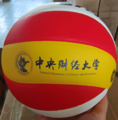

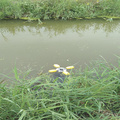
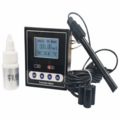
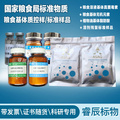



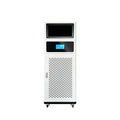
![聚酰胺粉 [柱层析用,高分离性能] 60-100目/80-120目/100-200目](https://p-06.caigou.com.cn/135x120/2024/7/2024071513085253637.jpg)
